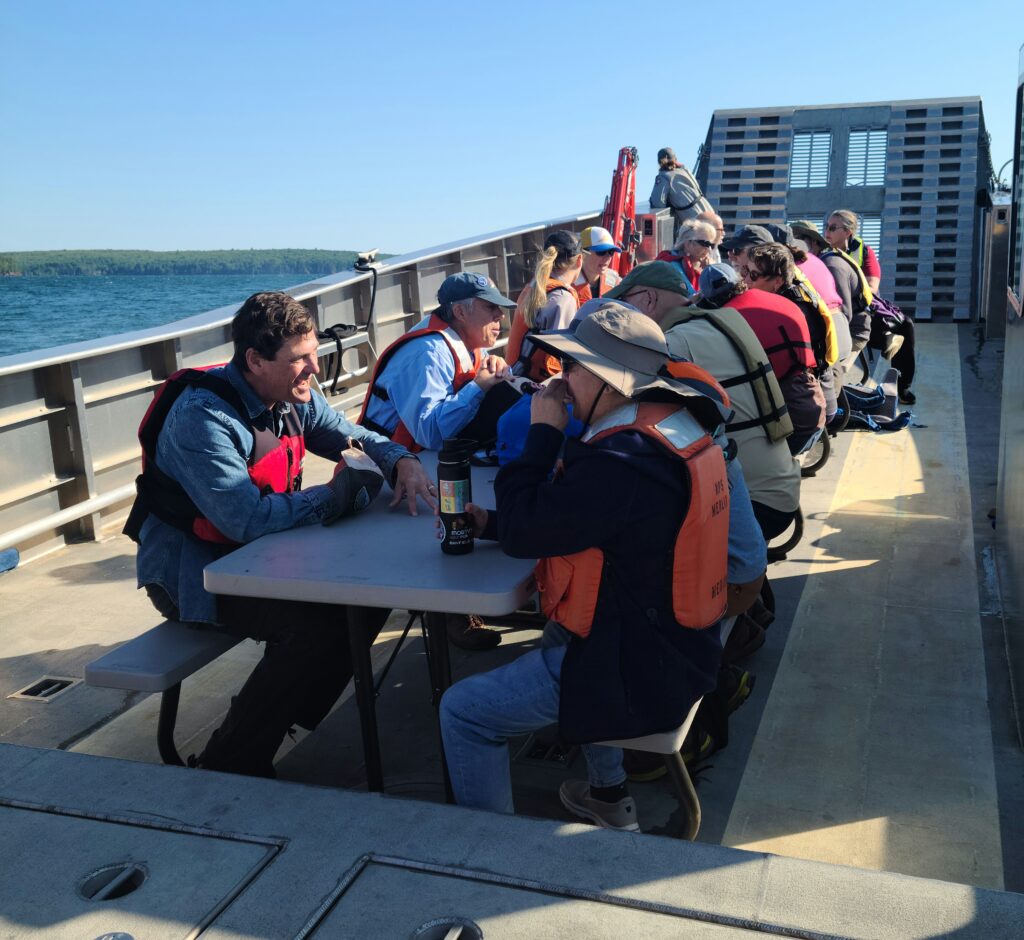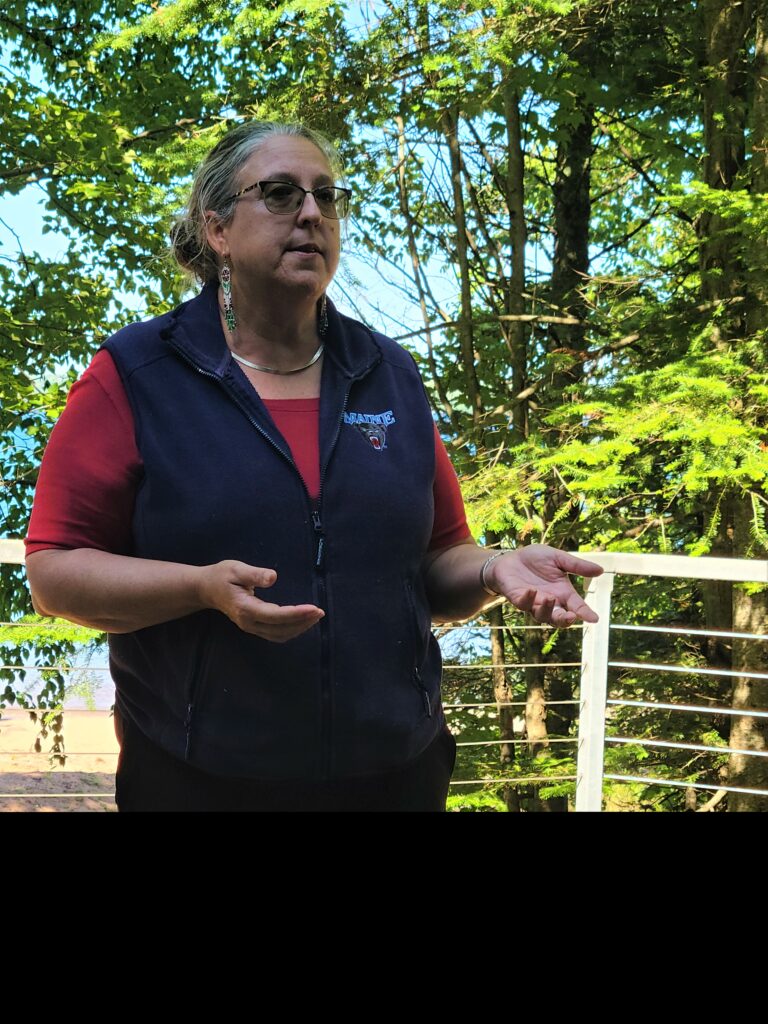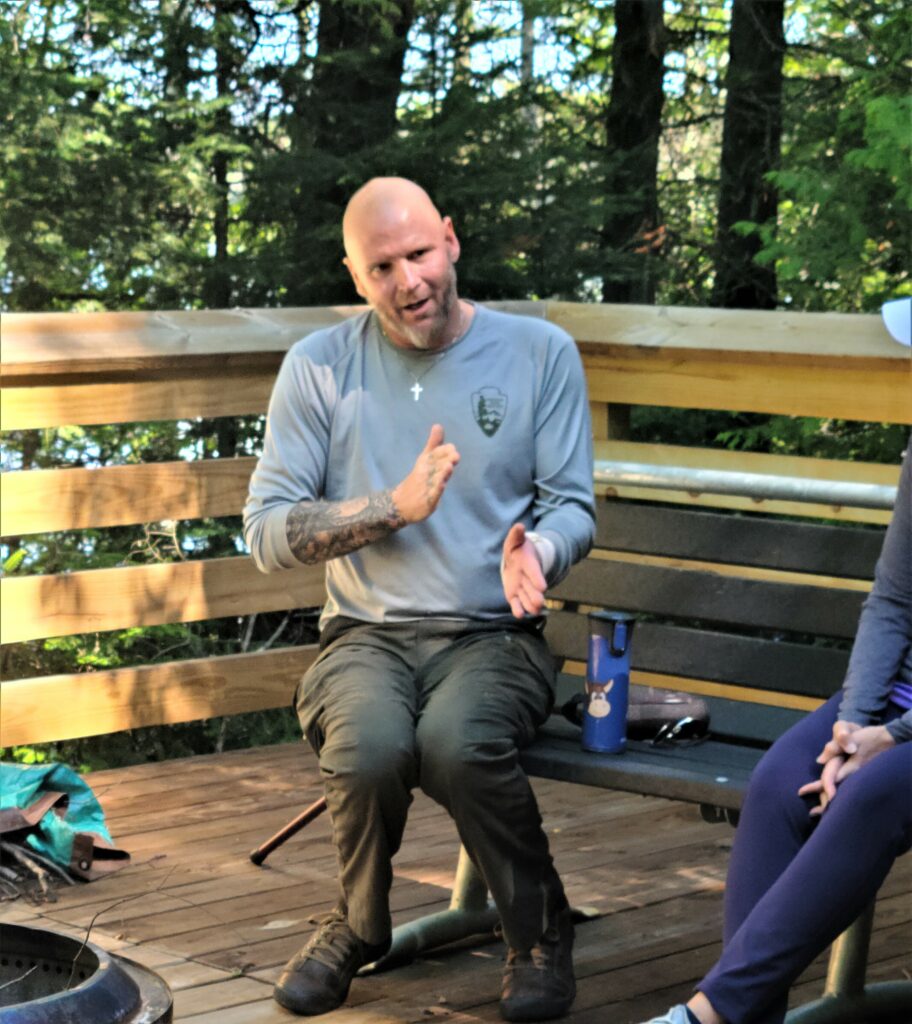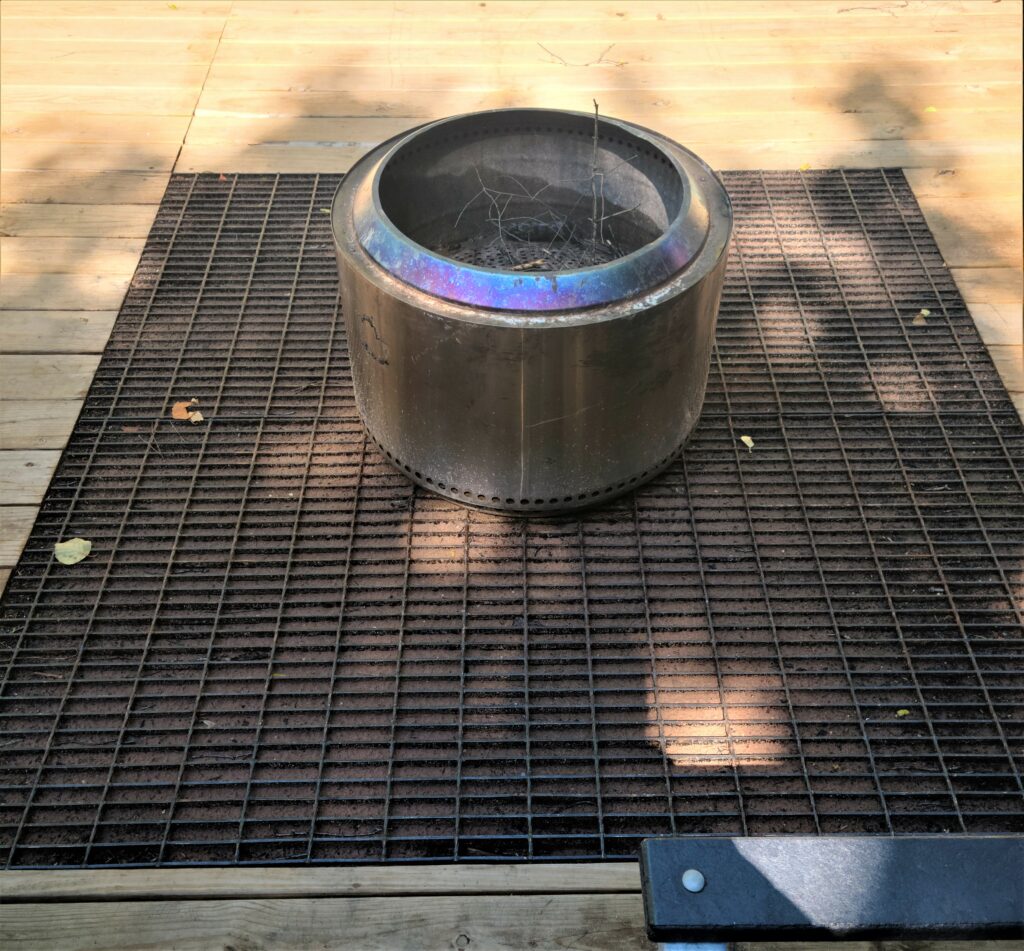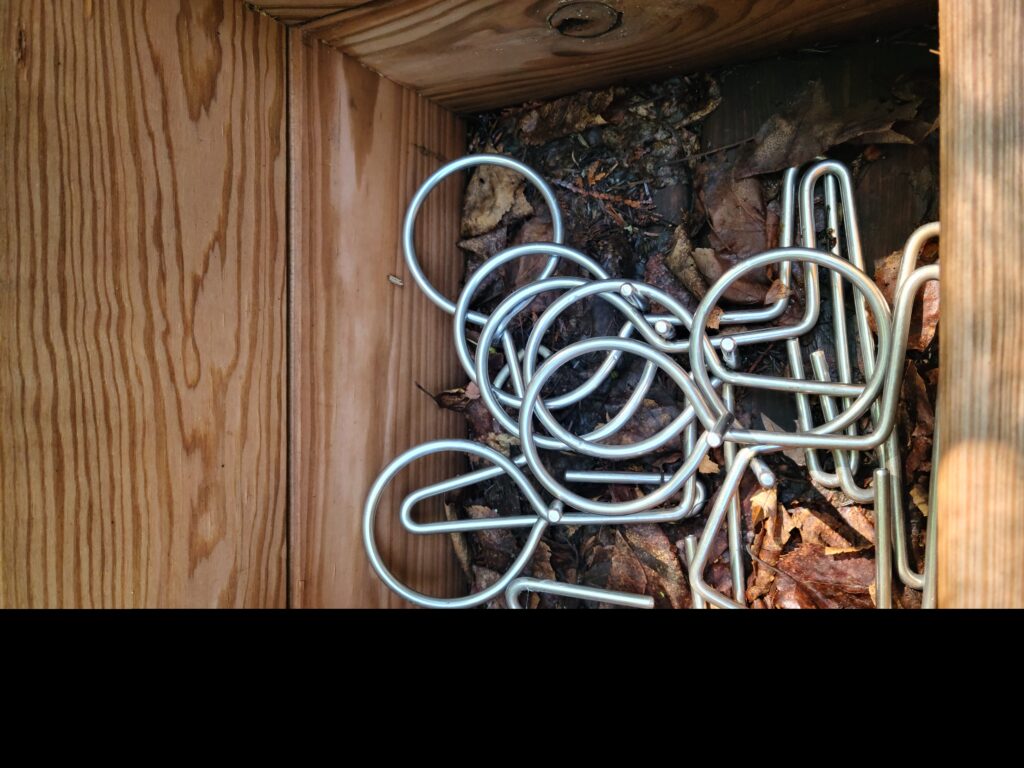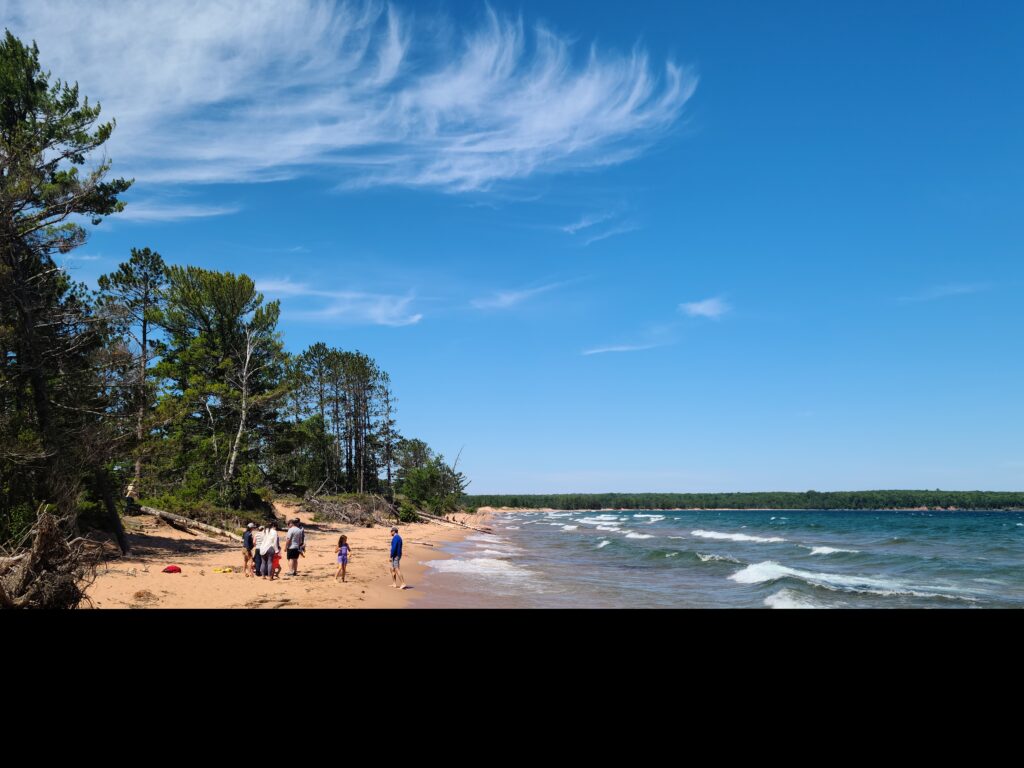Sea Grant communications team gets crash course in aquaculture, Lake Superior fish, buoys, bogs, islands and fire

Members of the Wisconsin Sea Grant communications team look into an aquaculture tank at the Northern Aquaculture Demonstration Facility while Emma Hauser looks on. Image credit: Marie Zhuikov, Wisconsin Sea Grant
Each summer, our communications team goes out in the field to see Sea Grant projects firsthand and to spend time with each other. This year’s learning trip took us to the Bayfield Peninsula and northern Wisconsin.

Emma Hauser shows off one of NADF’s aquacultured salmon. Image credit: Wisconsin Sea Grant
Highlights on the first day included a visit to the Northern Aquaculture Demonstration Facility in Red Cliff, where Sea Grant’s Emma Hauser helped us get up close and personal with some salmon. For dinner, we got even closer to fish as we ate Lake Superior whitefish caught by Hoop’s Fisheries in Bayfield.

Lake Superior whitefish (and chips) caught and cooked by Hoop’s Fisheries. Image credit: Marie Zhuikov, Wisconsin Sea Grant
On Day Two, we learned about the Wave Watch Buoy Project in the Apostle Islands National Lakeshore from Jeff Rennicke, director of the Friends of the Apostle Islands. These University of Wisconsin–Madison data buoys allow boaters to access wind and wave information online, making for more safe boating.

Jeff Rennicke (right) with the Friends of the Apostle Islands talks about the group’s projects while Sea Grant’s Natalie Chin (left) and Moira Harrington (center) listen on the Bayfield City Dock. Image credit: Marie Zhuikov, Wisconsin Sea Grant
Next, we toured Bodin’s Fisheries where Bill Bodin showed us how Lake Superior fish are processed after they’re caught. Afterward at a shore lunch hosted by Eat Wisconsin Fish’s Sharon Moen, we dined on Bodin’s whitefish, cooked over a charcoal grill.

Bill Bodin in his fish store. Image credit: Marie Zhuikov, Wisconsin Sea Grant

Lake Superior fish caught by Bodin’s Fisheries. Image credit: Marie Zhuikov, Wisconsin Sea Grant
Sated, we caught the ferry to Madeline Island where we walked through a drizzle on the Big Bay Town Park boardwalk and learned more about the park’s unique lagoon, which is surrounded by a floating fen mat and, on the other side, a beautiful Lake Superior beach.
We caught the ferry back to the mainland only to board another boat for a grand cruise on the Apostle Islands. During the hourlong ride, we learned about the rich history of human interaction with these islands in Lake Superior. We saw lighthouses and sea caves cut into the island sandstone by the lake. We also waved to one of the Wave Watch buoys as we motored past.

Devil’s Island, Apostle Islands National Lakeshore. Image credit: Marie Zhuikov, Wisconsin Sea Grant
On the final day of our field trip, we drove to Superior, Wisconsin, where we met with Melonee Montano, one of the leads for a project that is investigating how Anishinaabe people connected to and homesteaded the lands of “Zhaagawaamikong Neyaashi” (Minnesota and Wisconsin points) and how they used fire to manage the landscape. She took us to both points and discussed the differences in habitats and uses.

Communications summer student Abigail Brown takes a photo of Melonee Montano on Minnesota Point for a video about her project. Image credit: Marie Zhuikov, Wisconsin Sea Grant
When the trip was over, I, for one, felt like my head was heavier from all the knowledge imparted by our speakers and experiences. These “crash courses” help greatly with our work to interpret Sea Grant research and outreach projects by providing us with vital background information. Plus, it’s not every day I get to watch a colleague hug a 20-pound salmon!

Editor Elizabeth White gets personal with a salmon at NADF while Emma Hauser looks on. Image credit: Wisconsin Sea Grant
The post Sea Grant communications team gets crash course in aquaculture, Lake Superior fish, buoys, bogs, islands and fire first appeared on Wisconsin Sea Grant.
Blog | Wisconsin Sea Grant
https://www.seagrant.wisc.edu/blog/sea-grant-communications-team-gets-crash-course-in-aquaculture-lake-superior-fish-buoys-bogs-islands-and-fire/

